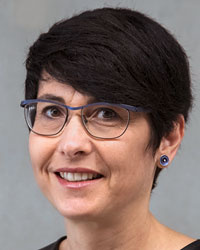Monica Gotta Group

Project at a glance
Regulation of asymmetric cell division
Asymmetric cell division is a fundamental process essential for the generation of cell diversity during development and for the self-renewal of stem cells. Establishment of an axis of polarity and proper positioning of the mitotic spindle are essential for asymmetric cell division. While we know some of the players involved in these processes, the regulation and interconnection of the signaling cascades underlying these events remain elusive.
In my lab we use C. elegans embryo as an ideal model system to study asymmetric cell division, particularly because it offers the possibility to combine differential interference contrast and fluorescence microscopy of live embryos with very well developed forward and reverse genetics. In addition, functional genomic screens by RNA interference allow for the rapid identification of novel genes involved in processes of interest.
The goal of our research is to identify new factors required for polarity and spindle positioning and to characterize their role in the signaling pathways that underlie these processes using a combination of genetics, microscopy, biochemistry and functional genomics. Since the processes underlying asymmetric cell division are conserved, our studies will be applicable to animal cells and thereby improve our understanding of this process not only in C. elegans but also in other systems, in particular in the control of the self-renewal of normal and cancer stem cells.

